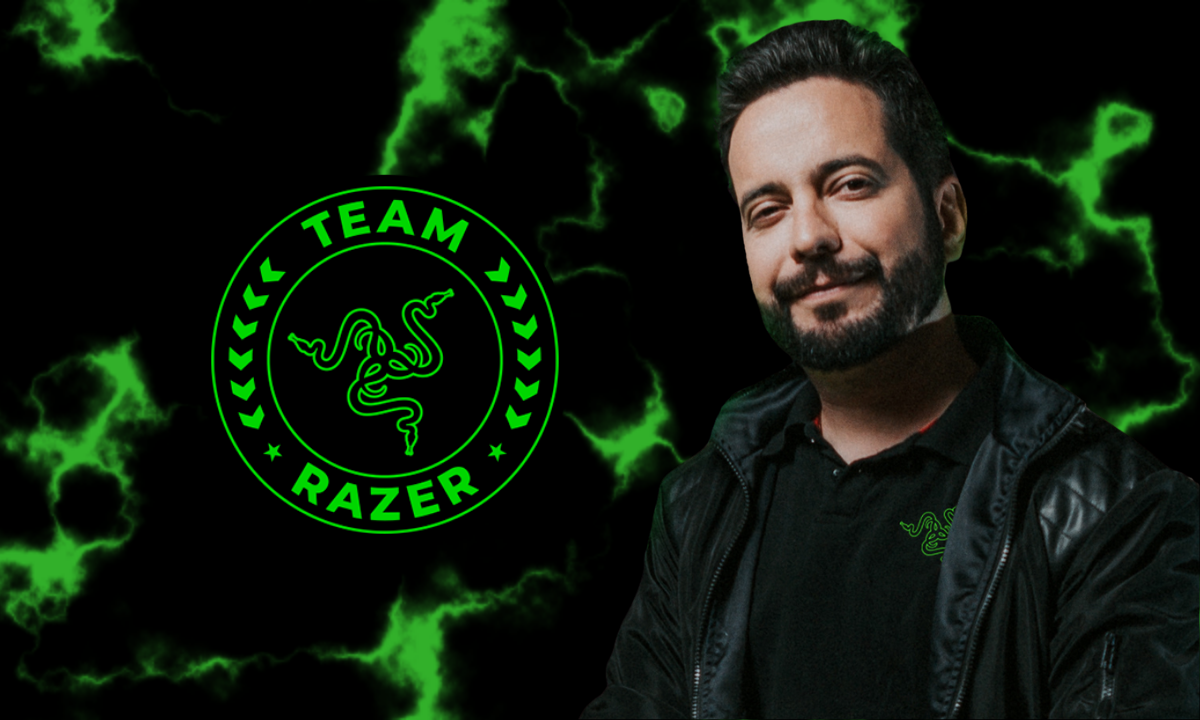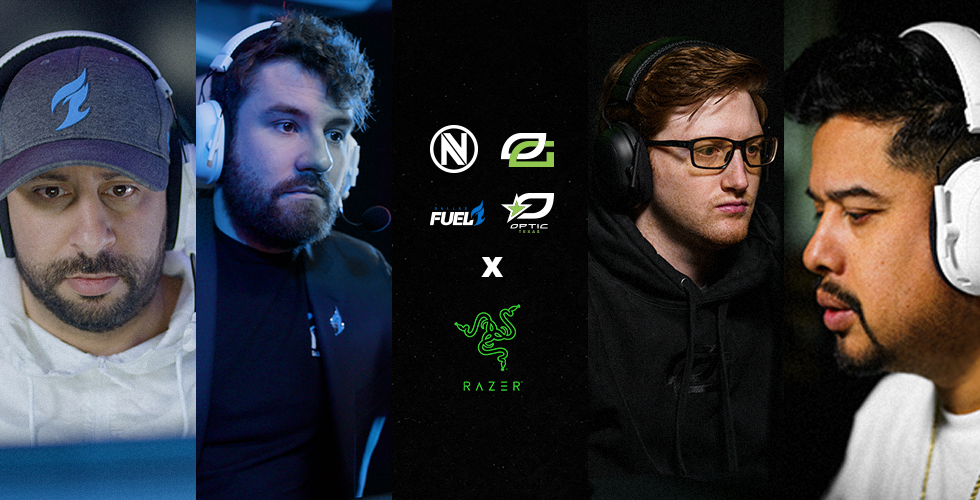Razer’s iconic green snake is probably one of the most synonymous logos with esports and gaming. The company started sponsoring esports teams and events more than two decades ago, and has been doing it ever since.
Three weeks on from Razer’s latest partnership with Team Envy, Esports Insider spoke to Flo Gutierrez, Razer’s Global Esports Director, about the relationship, and how it fits into broader plans Razer has in the world of esports sponsorships.

RELATED: Razer secures partnership with Knicks Gaming
Gutierrez joined Razer in 2021 after two years at Team Vitality, where he worked as the Chief Marketing Officer. Prior to working for the French esports organisation, he held marketing positions in Red Bull that were tied directly to gaming and esports.
Razer’s multi-year deal with Envy is a long-term effort and is one of the biggest partnerships to date for the hardware company, Gutierrez explained. The deal includes all of Envy Gaming’s teams — Envy, Dallas Fuel, OpTic, and OpTic Texas, and has been in the making since 2021. Working with Envy has been a fruitful experience for Razer, and Gutierrez noted that both parties were aligned from the beginning, so the process was smooth — albeit a lengthy one.
On the surface, the reasoning behind the partnership is obvious. After its merger with OpTic Gaming, Envy is one of the largest esports organisations in the world, not just in North America. With dozens of teams and content creators, the exposure a hardware brand can get by partnering with the entirety of Envy is potent. Gutierrez said that Razer is “always looking for ways to tell the stories of esports,” a driving force behind the partnership’s particular focus on working with content creators.
A better hardware partnership
Almost all esports teams have some sort of partnership with a peripheral brand. In a lot of cases, these partnerships revolve around teams receiving peripherals to use, as well as some form of financial support. In turn, brands ask for their logos on jerseys, their peripherals used on stream, and the like. A fairly basic concept, and a no-brainer for almost all esports teams — players need tools to play with after all.
Razer seeks to go further with this partnership, though. Expanding beyond simply supplying hardware, Razer is helping teams plan bootcamps prior to big tournaments, and providing therapists and wellness experts that work with teams in overcoming injuries and stress. Perhaps most importantly, Gutierrez also stressed the importance of incorporating player needs into its partnership.

“At Razer, we work very closely with our teams to get their feedback on any new product we might be developing. This is especially crucial to us as we want to make the best product that a gamer might need and use, the one that will give them this winning advantage. As professionals, teams know what to look out for in a product that will help give them a winning edge.”
Gutierrez added that Razer has immensely benefited from working with professional players and getting insights to use in product development, much the same way as sportswear brands use input from atheletes when developing new products.
Trusting your gut
When it comes to sponsorships, one of the issues is judging the overall partnership performance. Content creators and teams might use data that tends to be optimistic to try and impress sponsors, an issue that’s given the industry somewhat of a reputation for dodgy metrics. Gutierrez said that there are a number of ways for Razer to measure a partnership’s effectiveness. The tangible and quantifiable measures consist of a mix of social presence (visibility, impressions, reach) and competitive results. But there’s also the ‘gut feeling’, claimed Gutierrez.
“The intangible aspect would be the gut feeling one gets from the whole relationship with the team and the projects that we build up today for tomorrow’s success. We work closely together with our partnered teams to customise something that everyone is happy with and that will help them in performing at their best, in and out of games.”
Gutierrez said he doesn’t personally worry too much about inflated numbers because he’s worked on both sides of the fence in his career, referencing his time at Vitality — he understands the game.
[primis_video widget=”5182″]
RELATED: Guild Esports secures two-year Razer partnership
He did note, however, that the things teams need and want from hardware partners have drastically changed in the last four years, and vice versa. The best course of action, then, is to tailor each partnership as much as possible towards the brand in question.
Gutierrez did not disclose the finer details of the partnerships Razer has with esports teams and organisations, but he did mention that the company tries to keep two major spheres of interest when it comes to partnerships.
The first are the professional players, like Faker, or teams like Ninjas in Pyjamas and Edward Gaming that compete in the upper echelons of their respective regions. This is, of course, the same reason Razer has partnered with Envy and OpTic. On the other hand, Razer says it also places an emphasis on helping up-and-coming players and talents emerge, using partnerships and activations to help tell their story.
Three weeks in, the Razer x Envy partnership is still in its early stages. 2022, however, will show us just how much of a difference Envy’s partnership with the iconic snake can make.

